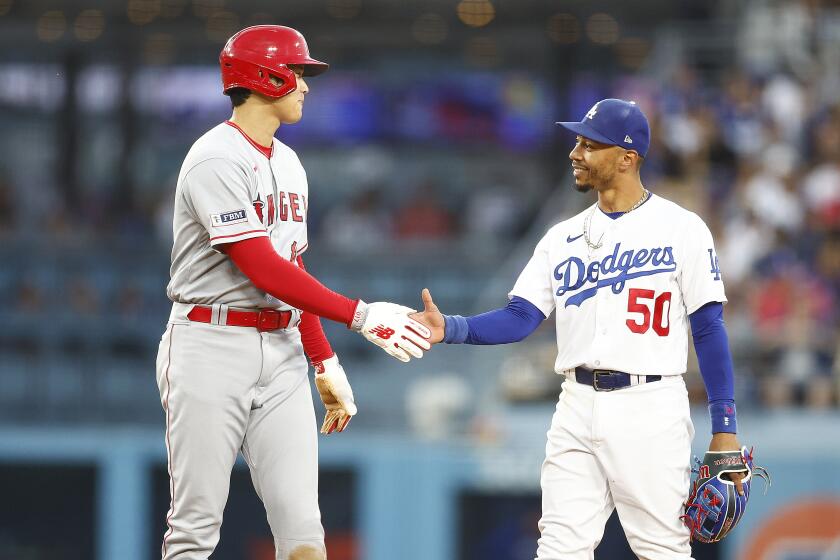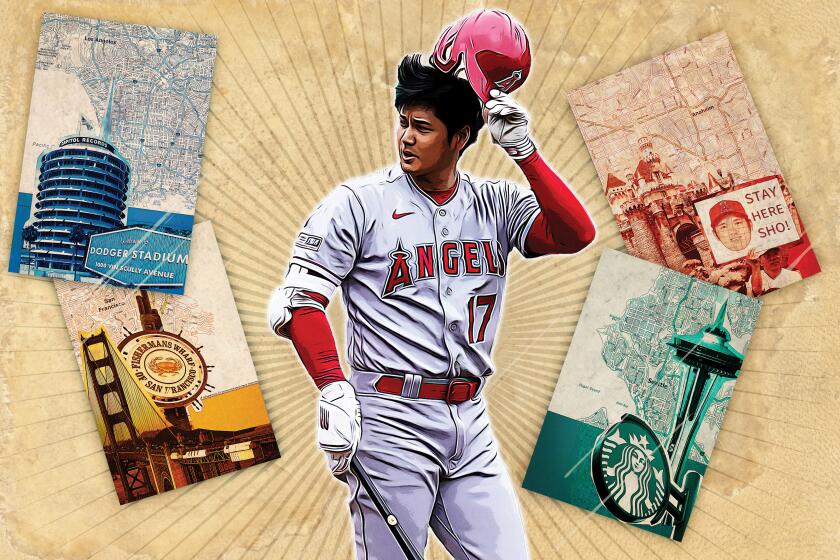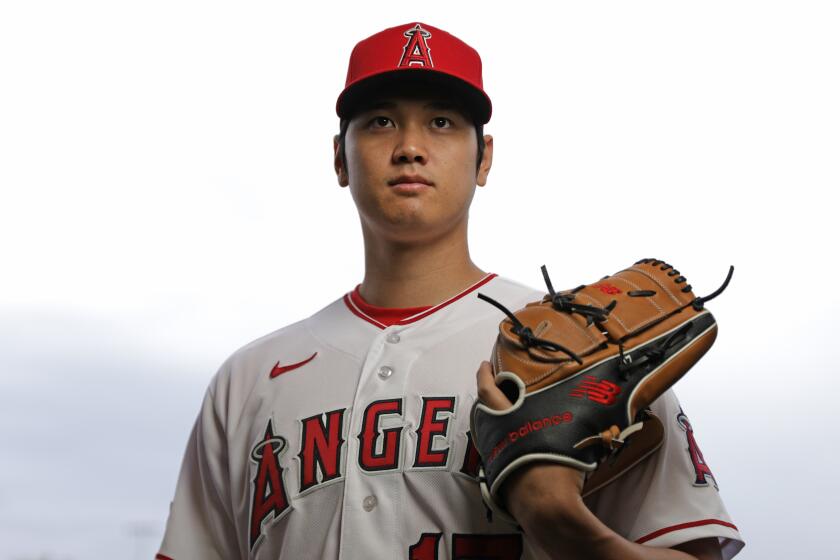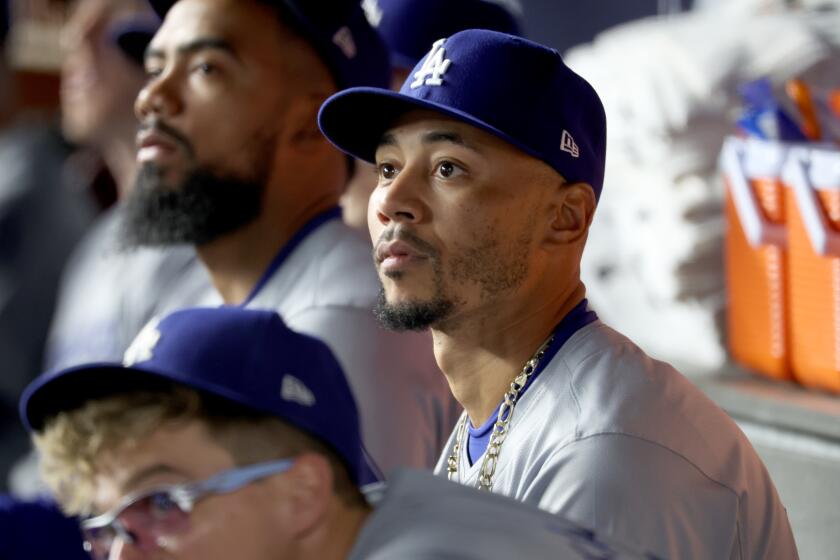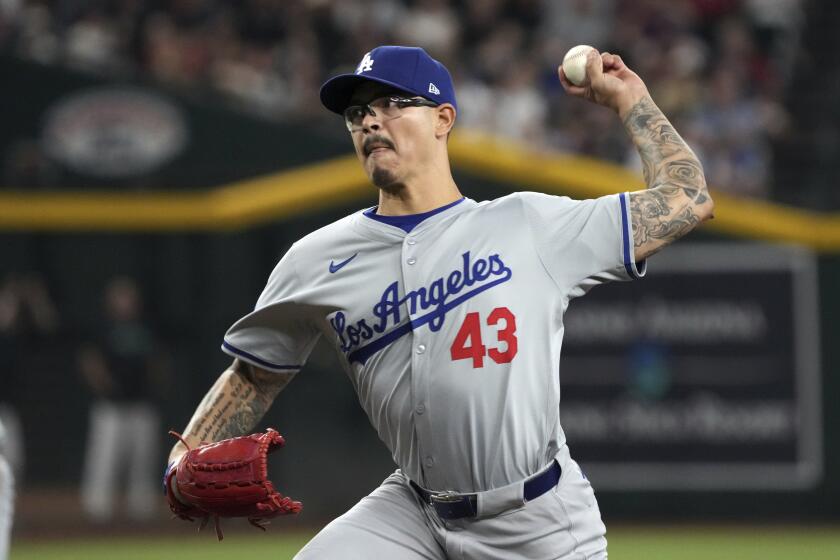The Dodgers want Shohei Ohtani. But how far will they go in a potential bidding war?
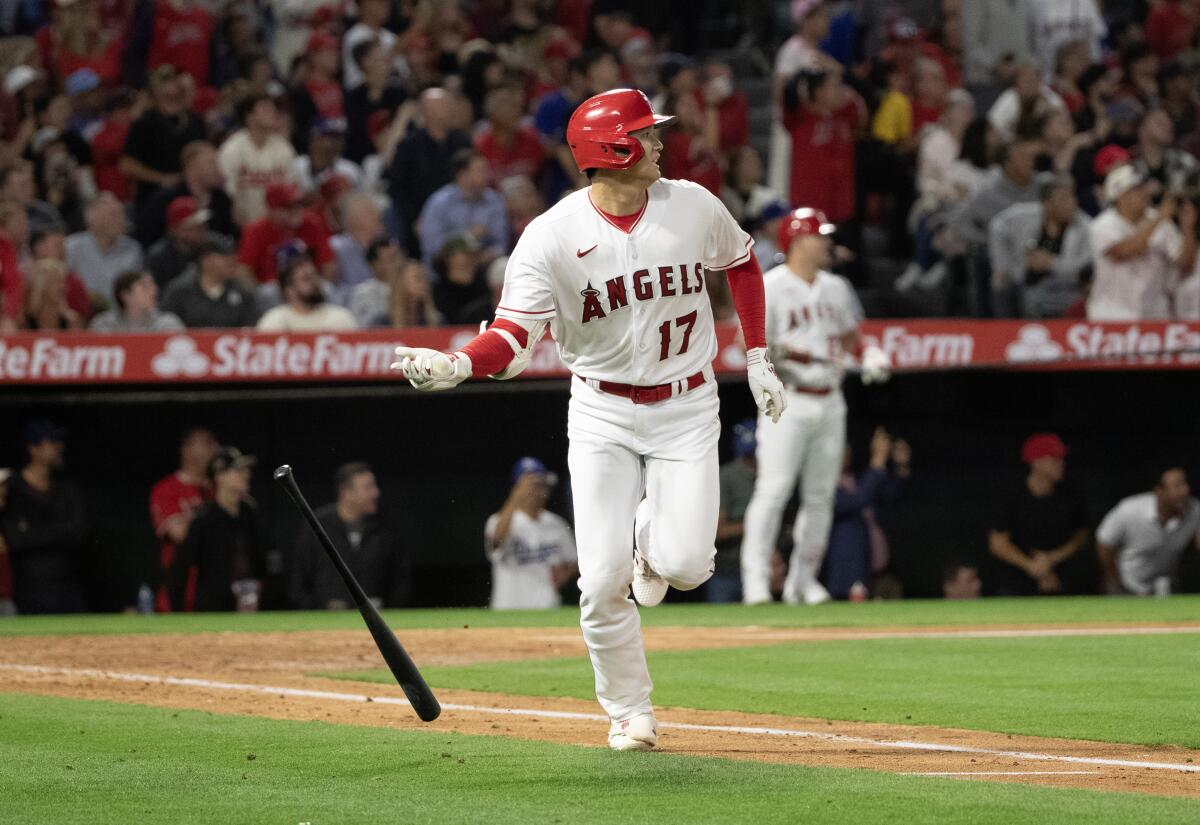
SCOTTSDALE, Ariz. — Scan the myriad lists of contract projections for MLB free agents this offseason, and the estimated payday for two-way star Shohei Ohtani only seems to grow.
$400 million? $500 million? Maybe more?
Even after undergoing an elbow surgery that will limit him to hitting-only next season, Ohtani continues to be pegged for a record-breaking, potential half-billion-dollar deal.
Which, for all the Dodgers’ interest in the 29-year-old superstar, raises an important question: Will this be the time the team goes all in on a big-name, high-priced bidding war? Or will they show the same fiscal constraint that has sidelined them for some of MLB’s other top free agents in recent years?
On the first day of MLB’s general manager meetings in Arizona on Tuesday, Dodgers president of baseball operations Andrew Friedman didn’t tip his hand.
The Dodgers have a long list of things they want to accomplish this offseason, the biggest being their pursuit of a certain free agent last seen in Anaheim.
During a chat with reporters at the Omni Resort just outside of Phoenix, Friedman followed the lead of other league executives by declining to discuss Ohtani specifically, saying he doesn’t speak publicly about individual free agents.
He offered little insight into the team’s planned pursuit of the soon-to-be two-time MVP, or the difficulties of valuing a player with such unique two-way talents.
And when asked directly if the Dodgers would be comfortable making Ohtani a potential MLB-record contract offer (Mike Trout’s $426.5-million extension with the Angels is the league’s current high mark) if that’s what it took to sign him, neither Friedman nor general manager Brandon Gomes offered to comment.
Only in time, apparently, will the answer become clear.
The Dodgers, of course, are not a light-spending franchise by any means. They’ve ranked top-five in MLB in payroll in each of the last 11 seasons. They’ve been over MLB’s luxury tax threshold each of the last three.
They’ve also cleared close to $100 million in payroll entering this winter — through the expiration of bigger contracts like Clayton Kershaw’s and Julio Urías’, as well as the team’s decision to retain only two of six players who had club options for next season — leaving them with only about $130 million in commitments for next year and roughly $80 million on the books for 2025.
Whether they have the money to add Ohtani isn’t in doubt.
But whether they will feel comfortable committing so much, for so long, to just one player remains to be seen.
Under Friedman and the Mark Walter-led Guggenheim ownership group, the Dodgers haven’t lined up financially with many top free agents. They were outbid for Bryce Harper and Gerrit Cole in 2019 and 2020, respectively. In more recent winters, they’ve let Corey Seager, Trea Turner and Max Scherzer all depart the club for more lucrative free-agent contracts elsewhere.
The Dodgers have splashed for several big-dollar acquisitions. First baseman Freddie Freeman got $162 million guaranteed two winters ago, the largest free-agent commitment in club history. Mookie Betts signed his $365-million extension shortly after being acquired in a 2020 trade, the largest overall contract ever signed by a Dodgers player. And there was the now-infamous three-year, $102-million deal they gave Trevor Bauer before the 2021 season.
Still, even those deals were viewed as relative bargains around the industry.
If the Dodgers ever want to be the same force in October as they are in the regular season, they have to land Shohei Ohtani, the clutch superstar they desperately need.
And, if the past is any sort of prologue, the Dodgers’ hesitancy toward engaging in nine-figure bidding wars — let alone one that could result in the biggest contract in MLB history — looms as a potential complication in their Ohtani pursuit.
There could always be other ways for the Dodgers to woo Ohtani, who already bypassed one potential payday when he initially made the jump to MLB in 2018.
Despite recent postseason struggles, the club remains one of the league’s most prominent annual contenders, offering Ohtani the chance to compete for a World Series in a way he never did with the Angels.
The ability to stay in Southern California and rehab his elbow with one of the sport’s most resource-rich franchises could also be marks in the Dodgers’ favor, once Ohtani begins comparing his free-agent options.
The Dodgers won’t be afraid to get creative with their contract offers, either. Even if they don’t pony up the most guaranteed money, they could entice Ohtani with high annual salaries on a shorter-term contract, potential opt-outs and performance bonuses that could maximize his earnings potential, or other incentives the seventh-year big-leaguer might find appealing.
It’s a tact the team has attempted with free agents before. It’s typically the path Friedman and his front office — staunch advocates of maintaining long-term financial flexibility — find most sensible when operating at the top of the open market.
Perhaps this time will be different. Maybe the Dodgers, knowing how much Ohtani could bolster not only their roster but also their advertising revenue, will throw caution to the wind and pay whatever it takes.
Their previous patterns of decisions, however, suggest otherwise.
And if total guaranteed money is what Ohtani values most of all, the club could face a critical choice: Go all in on the kind of bidding war they’ve usually avoided, or risk missing out on an all-time talent.
With the World Series complete, some questions to ponder as Shohei Ohtani officially hits the open market as a free agent.
More to Read
Are you a true-blue fan?
Get our Dodgers Dugout newsletter for insights, news and much more.
You may occasionally receive promotional content from the Los Angeles Times.

